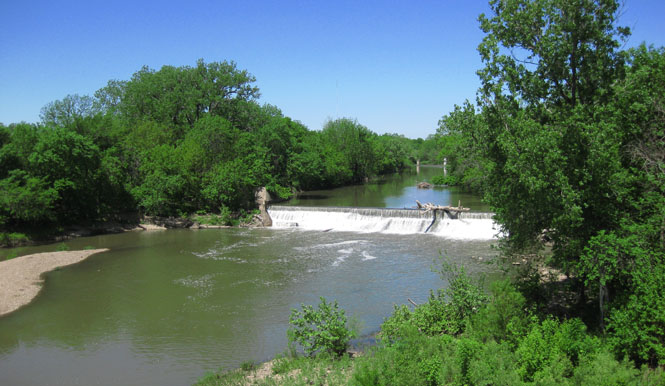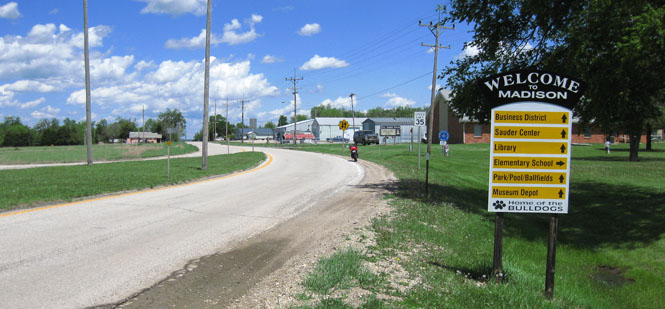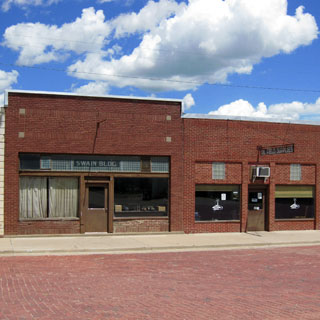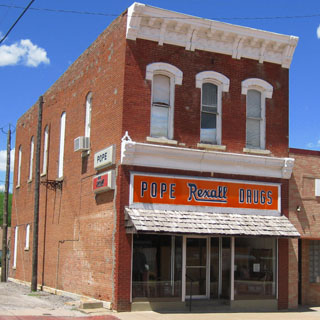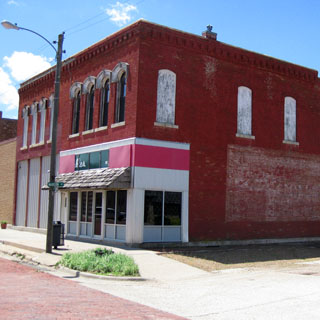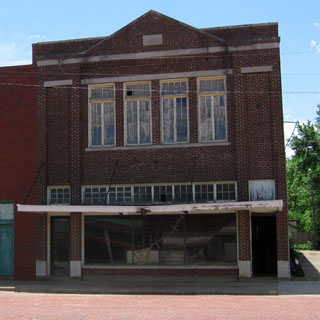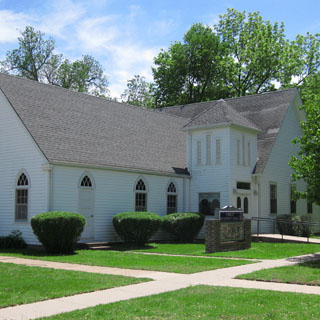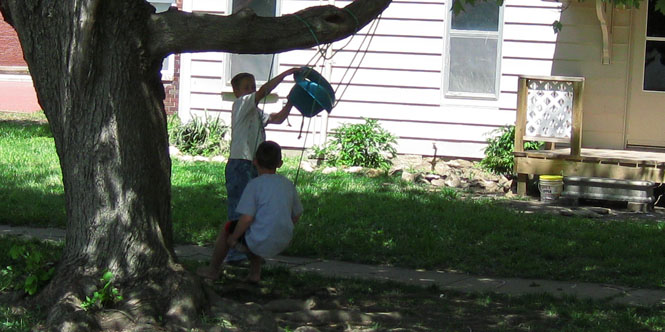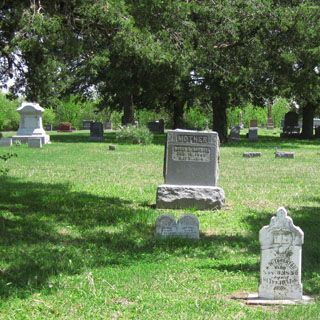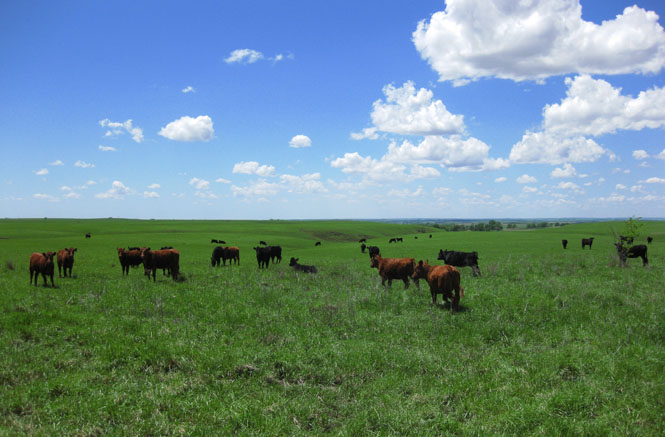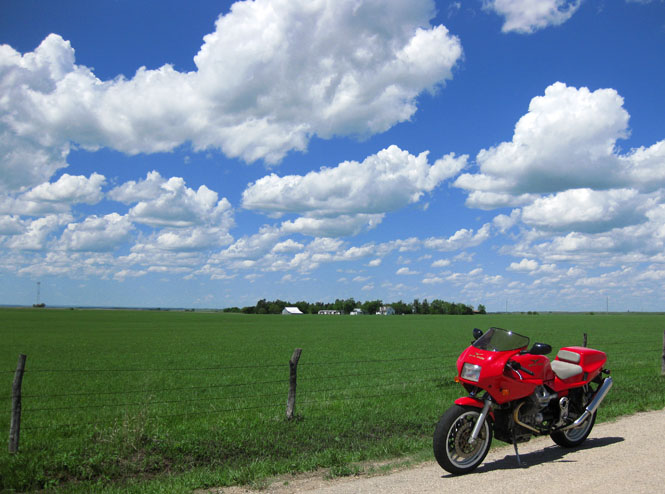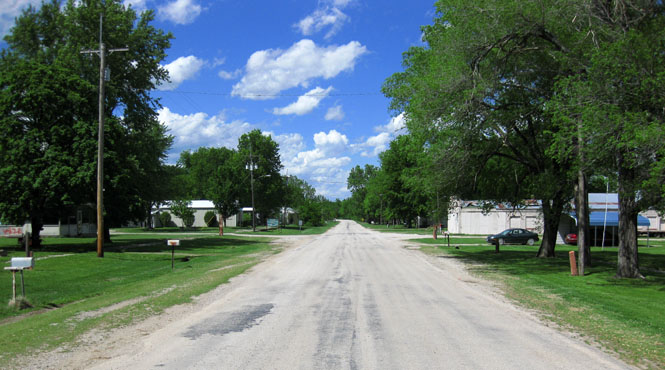May 2, 2010

Madison, Kansas is in Greenwood county, on the Verdigris River. It's a fairly good size town, but no longer has anywhere near the population that it once had.
 Kansas
Kansas
Looking back towards the Flint Hills not far west of Eureka.
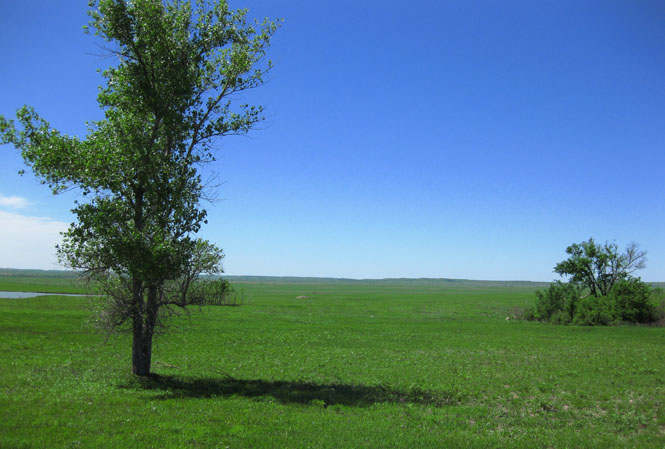
The Fall River.
All the downtown roads are brick and quite wide. The highway completely bypasses the town so there is very little traffic.

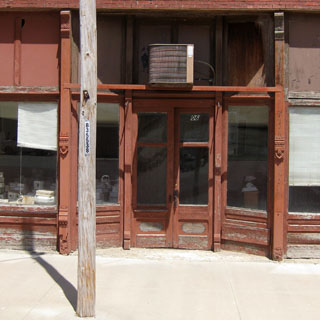
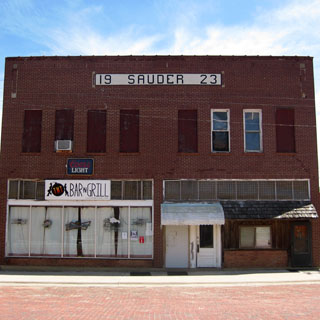
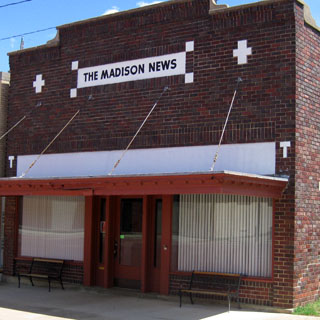
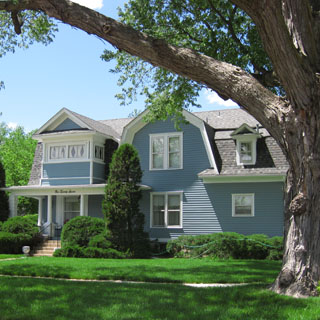
Forty years from now these two kids will look back on the time when they lived in Madison and had a swing hanging from the big tree just outside their house.
Madison, the second town in importance and size in Greenwood county, is located on the Atchison, Topeka & Santa Fe and the Missouri Pacific railroads, and on the Verdigris river in Madison township, 27 miles northeast of Eureka, the county seat. It is the only important shipping and receiving station for many miles around and has a number of mercantile establishments. There are 2 banks, a weekly newspaper (the Spirit), express and telegraph offices, and an international money order postoffice with five rural routes. The schools are excellent and all the leading denominations of churches are represented. The population in 1910 was 721.
The first Madison was established in 1872, northwest of the present town. E. Smith opened a general merchandise store, and later four men named Green, Strails, Crinkle and Oglesby erected log buildings and began business. In 1879, when the Atchison, Topeka & Santa Fe R. R. was built, the town was moved to the present site, which was laid out by a town company with the following officers: President, L. J. Cunkle; secretary, S. J. Wells; treasurer, W. Martindale. The postoffice was also moved, the postmaster, T. A. McClure, still retaining his office. A school house was built at the cost of $1,100, and E. Walters was the first teacher. The first building on the new town site was the residence of W. H. Green. Professional people came in, new business enterprises were established and inside of two years the population had increased to 300. The first church was organized by Rev. H. P. Baker before the founding of the town. The first newspaper (the Madison News) was established in 1879 by W. O. Lundsford. - [1912] State Library of Kansas
A schoolhouse (now a museum) and cemetery a few miles east of Madison.
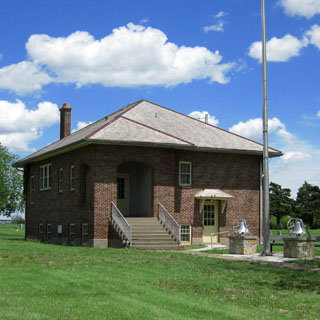
Toronto, the second largest town in Woodson county, is located on the Verdigris river at the junction of the Atchison, Topeka & Santa Fe and the Missouri Pacific railroads in Toronto township, in the southwest part of the county, 14 miles from Yates Center, the county seat. It is an incorporated city of the third class, has all lines of mercantile interests, good schools and churches, banking facilities, a weekly newspaper (the Republican), and a fraternal monthly. The town is supplied with telegraph and express offices and an international money order postoffice with four rural routes. The population in 1910 was 627.
Toronto was laid out by a town company in 1869. A school building had been put up several years before and with the founding of the town it was moved to the public square and enlarged. The first new building was the store of S. R. Kellogg. The postoffice was established in 1870, with Mr. Kellogg as postmaster. The early growth of the town was slow, but the coming of the railroad in 1882 gave it new life and in that year over 80 new buildings were erected. - [1912] State Library of Kansas
Yes; there are roads like this in Kansas.
Coyville, an incorporated city of Wilson county, is located on the Atchison, Topeka & Santa Fe R. R. and on the Verdigris river, in Verdigris township, 12 miles north of Fredonia, the county seat. It has all the main lines of business, including banking facilities. There are telegraph and express offices and a money order postoffice with one rural route. The population in 1910 was 227.
The first store was opened at this point in 1859 by Albert Hagen, a Polish Jew, whose principal customers were Osage Indians. The first church was organized at the home of Rachel Conner by T. B. Woodward. The place was named for Oscar Coy, who, with P. P. Steele, bought out Hagen's store in 1864. In May, 1866. the postoffice was established with Coy as postmaster. In August of the next year R. S. Futhey located a sawmill a mile below the town, which was the first one in the county. The next year he was grinding corn and making flour in the same mill. The mill was later moved to Coyville. A bridge was erected over the Verdigris in 1873, and in 1886 the railroad was built. - [1912] State Library of Kansas
The Verdigris River.

